A rich tapestry of hawks graces the diverse landscapes in the skies above North Carolina, each species contributing to the intricate balance of the state’s ecosystems.
This list unveils ten captivating hawks, shedding light on their unique features, habitats, and roles in the intricate web of nature.
From the fierce Peregrine Falcon, once endangered and now soaring high, to the elusive Ferruginous Hawk and the iconic Snowy Owl making occasional appearances, these raptors paint the Carolina skies with their distinct characteristics.
Join us on a journey to explore the awe-inspiring world of these majestic birds, understanding their significance in the natural order and the measures needed to ensure their continued presence in North Carolina’s dynamic environment. Stay sharp.
10 Hawks in North Carolina
Find out the diverse raptors gracing the skies of North Carolina. Each species contributes to the rich tapestry of the state’s ecosystems, from the elusive Ferruginous Hawk to the iconic Snowy Owl.
Join us on a journey to explore the unique characteristics and lifestyles of these magnificent birds of prey.
1. Ferruginous Hawk
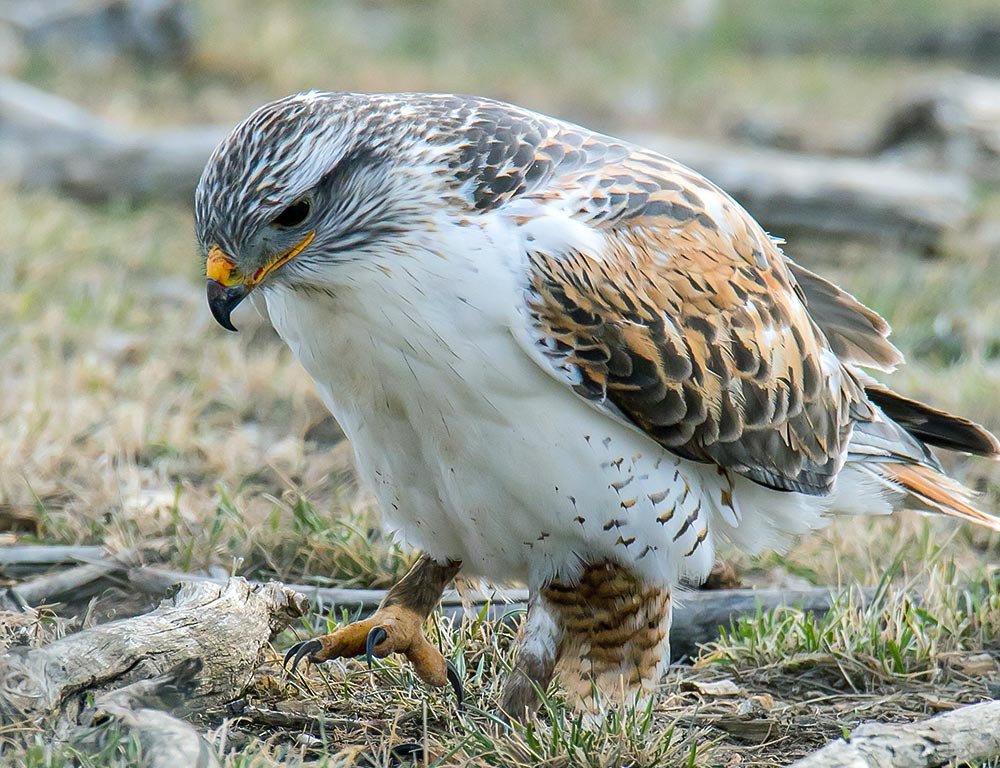
- Scientific name: Buteo regalis
- Category: Buteo (hawk)
- Population: Relatively low
- Life span: Up to 20 years
- Size: Wingspan of 3.3 to 4.3 feet
- Weight: 2.4 to 5.5 pounds
- Status: Near Threatened
The Ferruginous Hawk, with its distinctive rusty-coloured plumage on its legs and a pale head, is a raptor found in open grasslands and deserts.
It may be spotted in North Carolina during winter, often perched on fence posts or in flight searching for prey.
Its lifestyle revolves around hunting small mammals, reptiles, and birds, utilizing its keen eyesight to spot prey from great heights.
Nesting on cliffs or elevated platforms, these hawks are highly territorial during the breeding season, fiercely defending their nesting sites. Threats to their population include habitat loss and human disturbance.
2. Northern Harrier
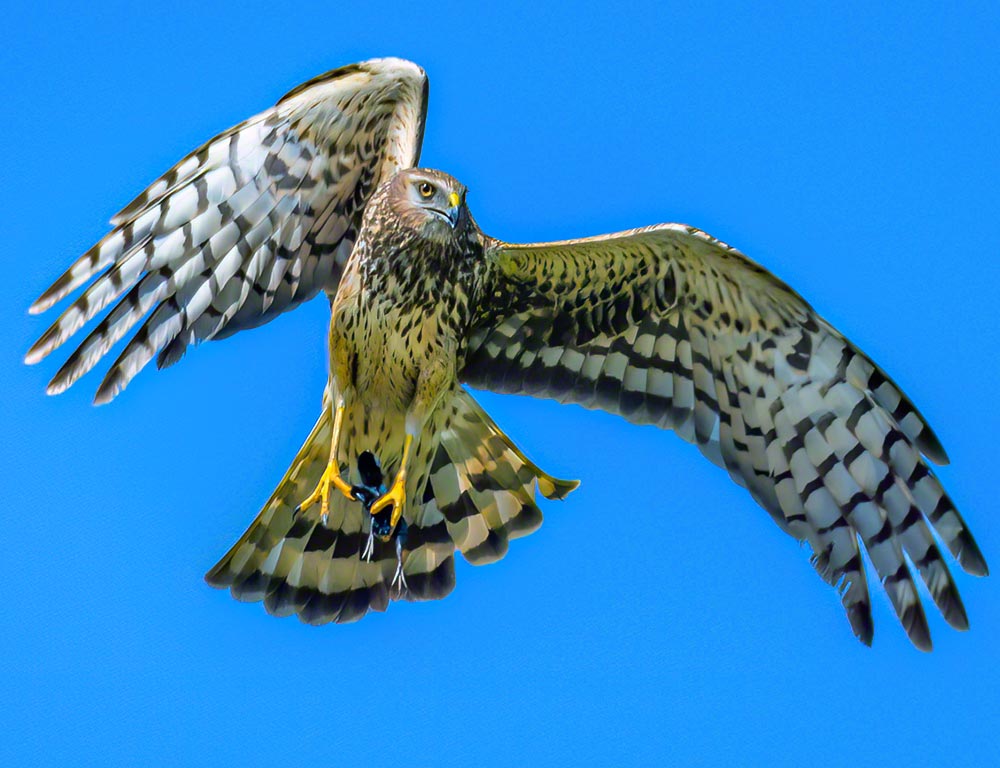
- Scientific name: Circus hudsonius
- Category: Harrier
- Population: Stable
- Life span: 12 to 16 years
- Size: Wingspan of 3.9 to 4.9 feet
- Weight: 0.7 to 1.6 pounds
- Status: Least Concern
The Northern Harrier, easily recognized by its owl-like facial disk, is a widespread hawk in North Carolina, favouring marshes, grasslands, and open areas.
With a distinctive hunting style, it glides low over the ground, using its keen hearing and vision to locate small mammals.
The harrier faces habitat loss and pesticide exposure challenges, but its adaptability to various landscapes contributes to its stable population.
Northern Harriers are known for their impressive courtship displays during the breeding season, involving aerial acrobatics.
They typically nest on the ground, creating a shallow depression in the vegetation, where they raise their chicks, contributing to the rich avian diversity in the region.
3. Northern Goshawk
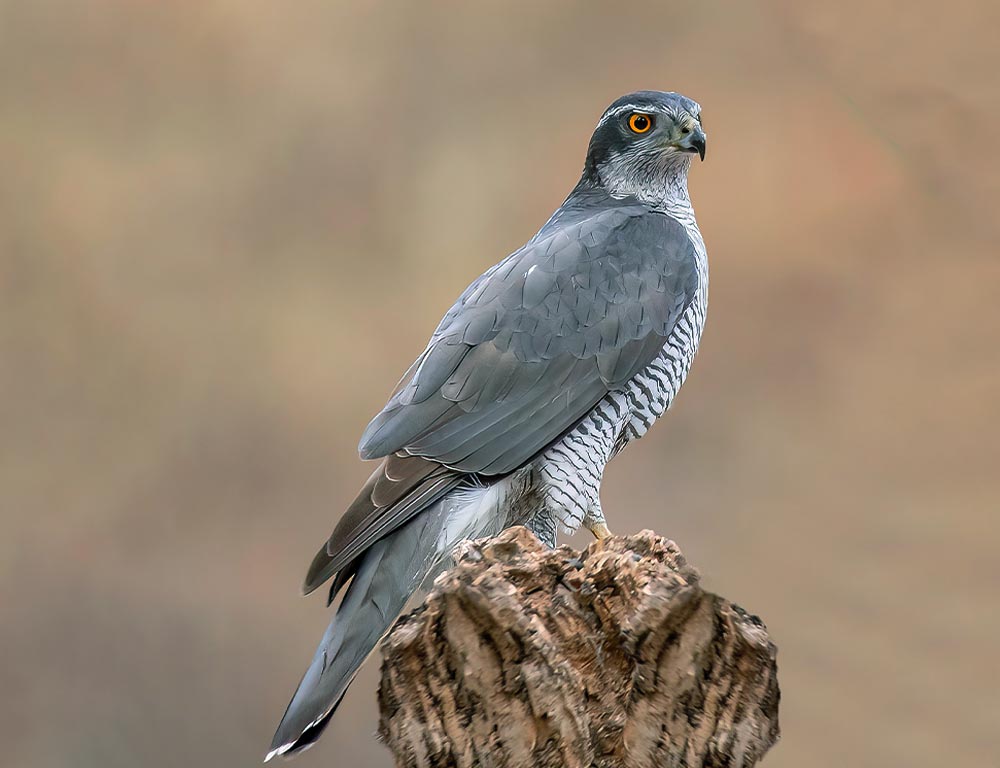
- Scientific name: Accipiter gentilis
- Category: Accipiter (hawk)
- Population: Stable
- Life span: 10 years (wild), up to 20 years (captivity)
- Size: Length of 20 to 27 inches, wingspan of 40 to 46 inches
- Weight: 1.5 to 3.5 pounds
- Status: Least Concern
The Northern Goshawk is a powerful and secretive forest raptor found in North Carolina. Identified by their robust build, short wings, and intense gaze, these hawks inhabit coniferous and mixed woodlands.
With a preference for dense forests, they are expert hunters, preying on various birds and mammals.
Goshawks are known for their swift and agile flight through the dense forest canopy. During the breeding season, they construct nests high in trees, displaying strong territorial behaviour.
While their population is generally stable, they face habitat loss and disturbance threats. Conservation efforts that focus on maintaining large, undisturbed forested areas contribute to the protection of this elusive hawk species.
4. Osprey
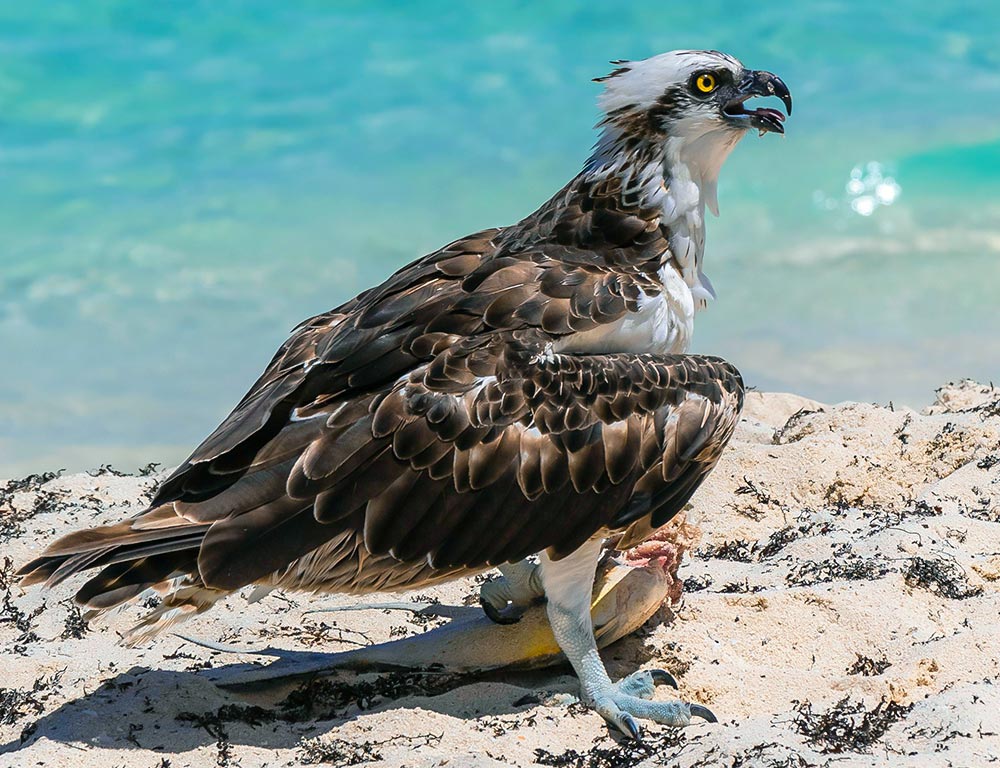
- Scientific name: Pandion haliaetus
- Category: Osprey
- Population: Increasing (due to conservation efforts)
- Life span: 7 to 10 years
- Size: Wingspan of 5.9 to 6.6 feet
- Weight: 2.4 to 4.4 pounds
- Status: Least Concern
The Osprey, also known as the fish hawk, is a distinctive raptor with a white head, dark eye stripe, and a wingspan designed for efficient fishing.
Ospreys are commonly found near water bodies in North Carolina, including lakes, rivers, and coastal areas. They are expert fishers, diving feet first to catch their prey.
Their population has notably increased due to successful conservation efforts, including installing artificial nesting platforms.
Ospreys construct large stick nests on platforms or elevated structures, and their breeding success is often monitored by researchers.
The Osprey’s adaptability to human-altered landscapes and its charismatic presence make it a symbol of successful wildlife conservation in the region.
5. American Kestrel
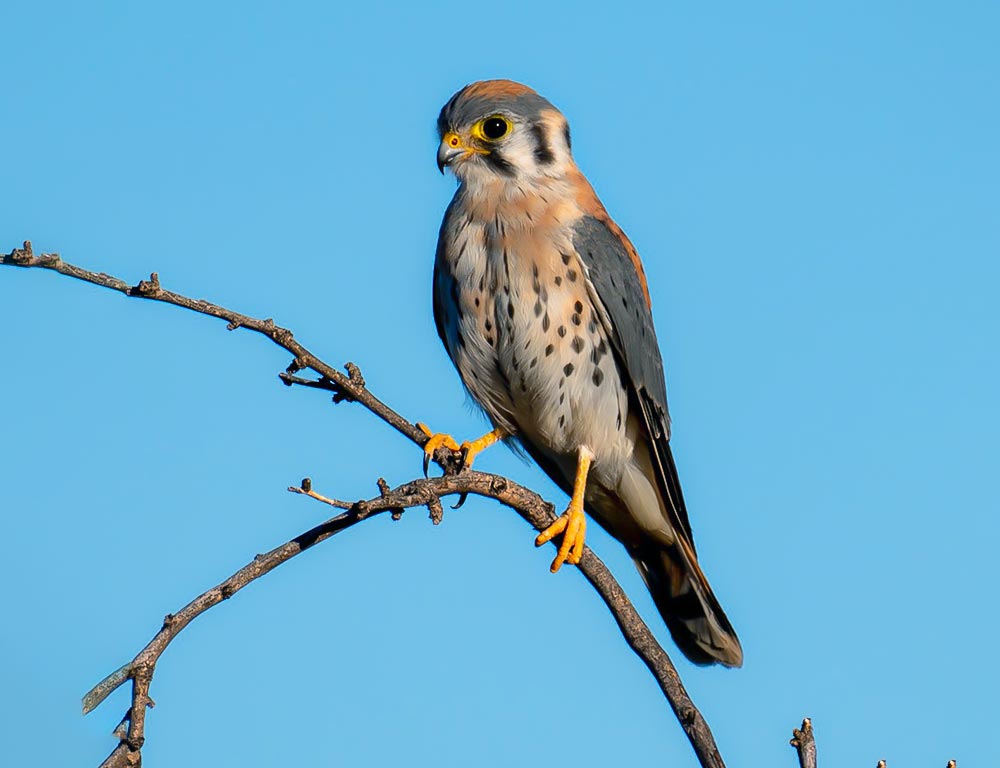
- Scientific name: Falco sparverius
- Category: Falcon
- Population: Abundant
- Life span: 5 to 10 years
- Size: Wingspan of 20 to 24 inches
- Weight: 3.5 to 4.1 ounces
- Status: Least Concern
The American Kestrel, the smallest falcon in North America, is a common sight in North Carolina. With its striking plumage of blue-grey wings and rusty back and tail, it often perches on wires or poles, scouting for prey.
These kestrels have a diverse diet, preying on insects, small mammals, and birds.
Their adaptability to both urban and rural landscapes contributes to their abundant population.
American Kestrels are cavity nesters, utilizing abandoned woodpecker holes or nest boxes. Despite their small size, they are fierce predators, displaying agile flight and remarkable hunting skills.
6. Peregrine Falcon
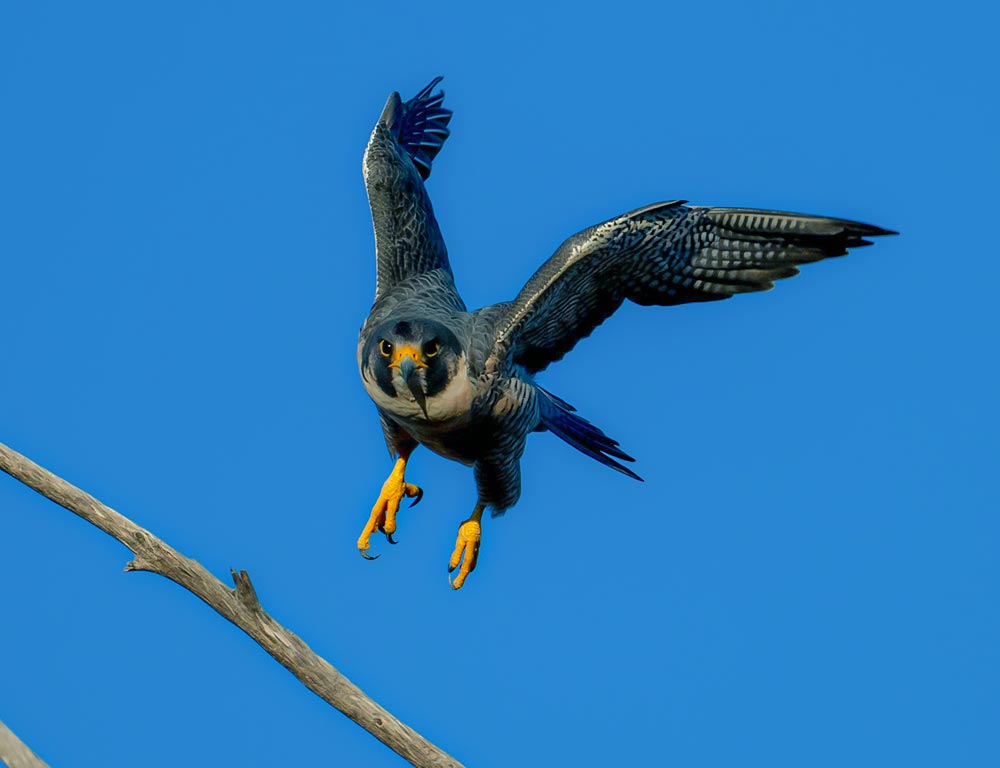
- Scientific name: Falco peregrinus
- Category: Falcon
- Population: Recovered (formerly endangered)
- Life span: 8 to 15 years
- Size: Wingspan of 39 to 43 inches
- Weight: 2 to 4 pounds
- Status: Least Concern
The Peregrine Falcon, renowned for its incredible speed and stoop hunting technique, has remarkably recovered from near-extinction.
Identified by its distinctive black markings on its head and strong, pointed wings, these falcons are often found near cliffs or tall structures, where they nest and dive at high speeds to capture prey.
Peregrines in North Carolina feed on birds, pursuing them in breathtaking aerial chases.
Their population rebound is a testament to conservation efforts, including banning DDT, which led to the thinning of their eggshells. Peregrine Falcons continue to be a symbol of successful wildlife conservation.
7. Adult Male Snail Kite
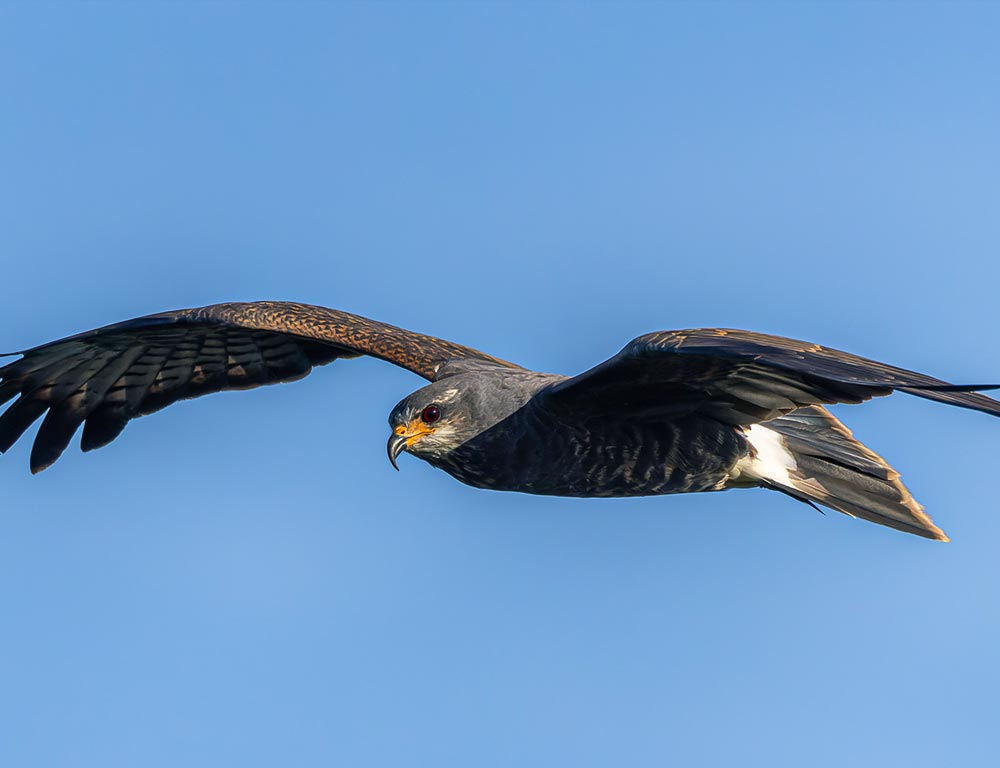
- Scientific name: Rostrhamus sociabilis
- Category: Kite
- Population: Stable
- Life span: 6 to 8 years
- Size: Wingspan of 3.7 to 4.3 feet
- Weight: 1.2 to 1.6 pounds
- Status: Least Concern
The Adult Male Snail Kite is a distinctive raptor with striking red eyes and a hooked bill. Primarily found in wetlands and marshes in North Carolina, these kites specialize in feeding on apple snails.
Their unique beak is adapted for extracting snails from their shells, showcasing a specialized ecological niche.
Although their population is relatively stable, they face threats from habitat loss and alteration of water flow in their preferred habitats. Males engage in courtship displays involving impressive aerial acrobatics.
The Snail Kite’s dependence on a specific prey species makes it vulnerable to changes in wetland ecosystems, emphasizing the importance of conservation efforts to maintain their habitats.
8. Barred Owl
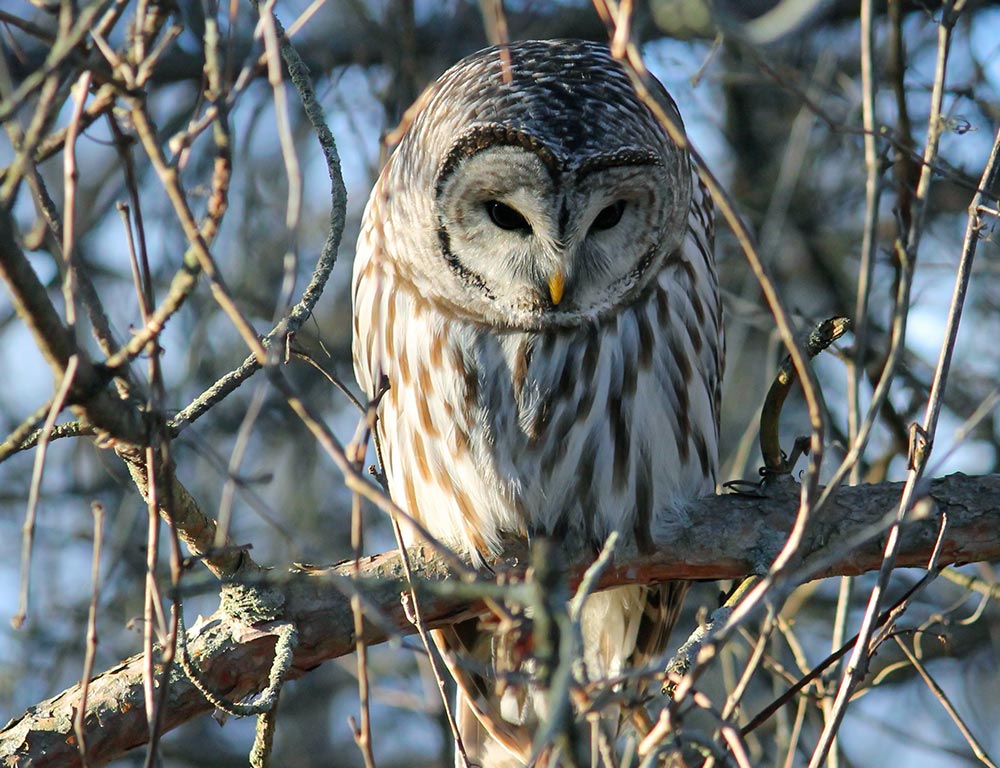
- Scientific name: Strix varia
- Category: Owl
- Population: Stable
- Life span: 10 years (wild), up to 23 years (captivity)
- Size: Length of 16 to 25 inches, wingspan of 38 to 49 inches
- Weight: 1.1 to 2.3 pounds
- Status: Least Concern
The Barred Owl, with its distinctive “who cooks for you” call, is a common and adaptable owl species in North Carolina.
Recognizable by its barred plumage and dark eyes, these owls inhabit various wooded environments, including forests, swamps, and suburban areas.
Barred Owls are nocturnal hunters, preying on small mammals, birds, and amphibians.
Their ability to adapt to urban landscapes contributes to their stable population. Nesting in tree cavities, these owls often reuse old nests or take over abandoned ones.
The Barred Owl is crucial in controlling rodent populations and contributes to the rich biodiversity of North Carolina’s ecosystems.
9. Merlin
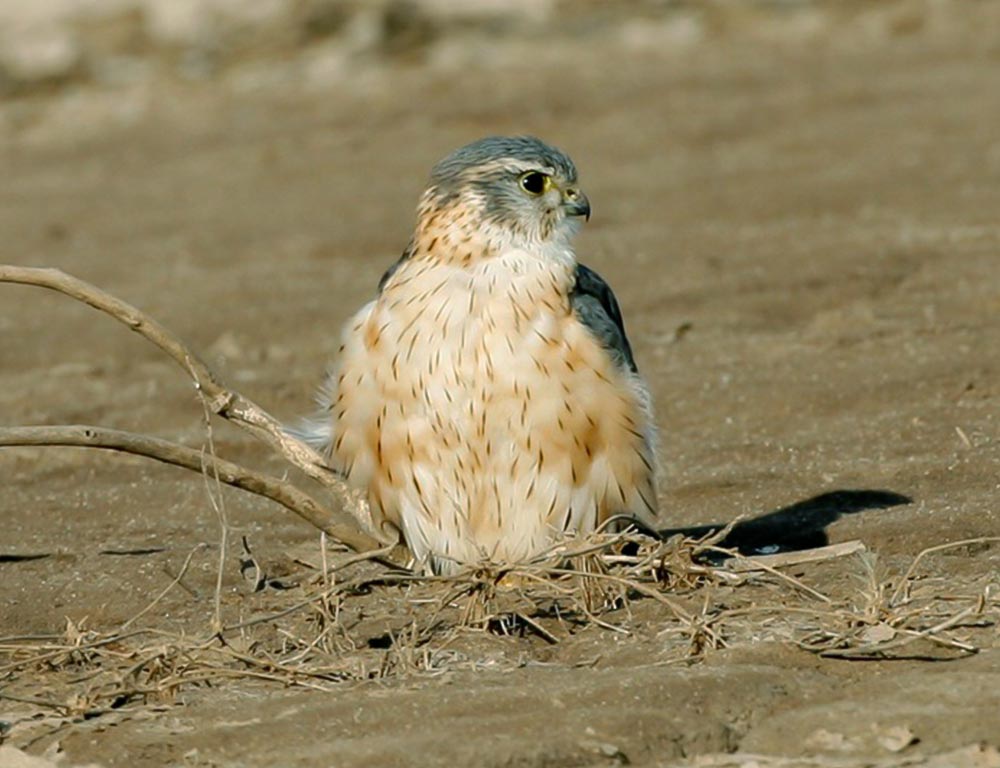
- Scientific name: Falco columbarius
- Category: Falcon
- Population: Stable
- Life span: 5 to 10 years
- Size: Wingspan of 20 to 26 inches
- Weight: 5.6 to 8.5 ounces
- Status: Least Concern
The Merlin, a small and agile falcon, is a migratory bird that can be spotted in North Carolina during winter.
Identified by its compact build and rapid flight, Merlins exhibit sexual dimorphism, with females being larger than males. These falcons are versatile hunters, preying on small birds and insects.
Known for their breathtaking aerial displays during courtship, Merlins often perch on high vantage points, scanning the surroundings for potential prey.
While their population is stable, they face habitat loss and pesticide exposure threats.
Conservation efforts to preserve open landscapes and reduce the use of harmful chemicals contribute to these dynamic falcons’ well-being.
10. Snowy Owls
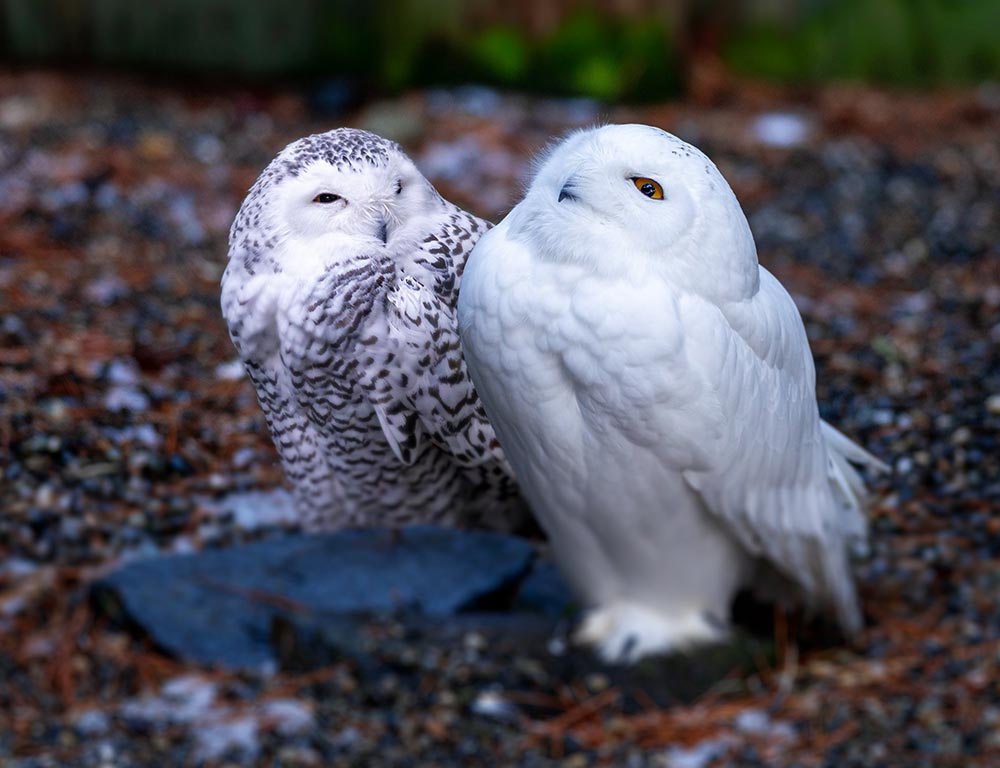
- Scientific name: Bubo scandiacus
- Category: Owl
- Population: Vulnerable (in some regions)
- Life span: 9.5 years (average)
- Size: Length of 20 to 28 inches, wingspan of 49 to 59 inches
- Weight: 3 to 6.6 pounds
- Status: Vulnerable (in some regions)
The Snowy Owl, a majestic Arctic bird, occasionally migrates to North Carolina during the winter, offering a rare and captivating sight.
Identified by their predominantly white plumage and intense yellow eyes, Snowy Owls are well-adapted to cold environments. They may be seen in coastal areas, dunes, or open fields in North Carolina.
Snowy Owls primarily feed on lemmings and other small mammals. Climate change and human disturbance in their Arctic breeding grounds contribute to their vulnerability.
Conservation efforts focusing on preserving their Arctic habitats and minimizing disturbance during migration are essential for the well-being of these iconic owls.
Wrapping Up
In the skies of North Carolina, a symphony of wings unfolds as Ferruginous Hawks soar over grasslands, Northern Harriers navigate marshes, and Snowy Owls grace winter landscapes.
The diverse raptors, from the agile American Kestrel to the majestic Peregrine Falcon, play pivotal roles in the state’s ecosystems.
Their adaptability, hunting techniques, and unique nesting habits showcase the delicate balance of nature.
As stewards of these avian wonders, conservation efforts become paramount to ensure the continued flourishing of these magnificent birds. Thank you so much.